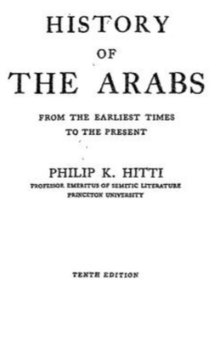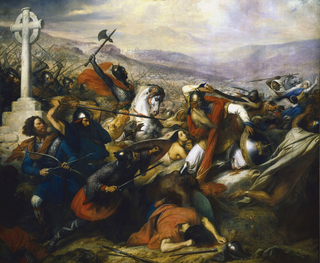
The Battle of Tours, also called the Battle of Poitiers and the Battle of the Highway of the Martyrs, was fought on 10 October 732, and was an important battle during the Umayyad invasion of Gaul. It resulted in victory for the Frankish and Aquitanian forces, led by Charles Martel, over the invading Muslim forces of the Umayyad Caliphate, led by Abd al-Rahman al-Ghafiqi, governor of al-Andalus. Several historians, such as Edward Gibbon, have credited the Christian victory in the battle as an important factor in curtailing the Islamization of Western Europe.

Foundation's Friends, Stories in Honor of Isaac Asimov is a 1989 book written in honor of science fiction author Isaac Asimov, in the form of an anthology of short stories set in Asimov's universes, particularly the Foundation universe. The anthology was edited by Martin H. Greenberg, and contributing authors include Ray Bradbury, Robert Silverberg, Frederik Pohl, Poul Anderson, Harry Turtledove, and Orson Scott Card. It commemorated Asimov's 50th anniversairy as an author. A number of writers who contributed to the anthology are also portrayed on the book's cover.
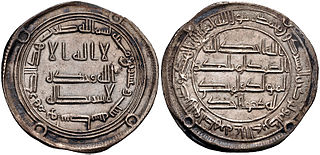
Yazid ibn al-Walid ibn Abd al-Malik, commonly known as Yazid III, was the twelfth Umayyad caliph, ruling from 744 until his death months later.
Majd ad-Dīn Usāma ibn Murshid ibn ʿAlī ibn Munqidh al-Kināni al-Kalbī or Ibn Munqidh was a medieval Arab Muslim poet, author, faris (knight), and diplomat from the Banu Munqidh dynasty of Shaizar in northern Syria. His life coincided with the rise of several medieval Muslim dynasties, the arrival of the First Crusade, and the establishment of the crusader states.

Al-ʻUzzā was one of the three chief goddesses of Arabian religion in pre-Islamic times and she was worshipped by the pre-Islamic Arabs along with al-Lāt and Manāt. A stone cube at Nakhla was held sacred as part of her cult. She is mentioned in Qur'an 53:19 as being one of the goddesses who people worshipped.
Kitab al-I'tibar is the autobiography of Usama ibn-Munqidh, an Arab Syrian diplomat, soldier of the 12th century, hunter, poet and nobleman.
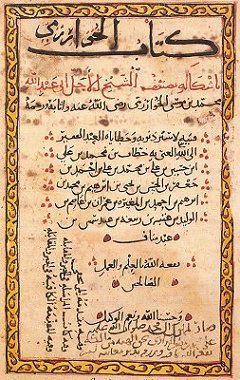
Al-Jabr, also known as The Compendious Book on Calculation by Completion and Balancing, is an Arabic mathematical treatise on algebra written in Baghdad around 820 by the Persian polymath Al-Khwarizmi. It was a landmark work in the history of mathematics, with its title being the ultimate etymology of the word "algebra" itself, later borrowed into Medieval Latin as algebrāica.
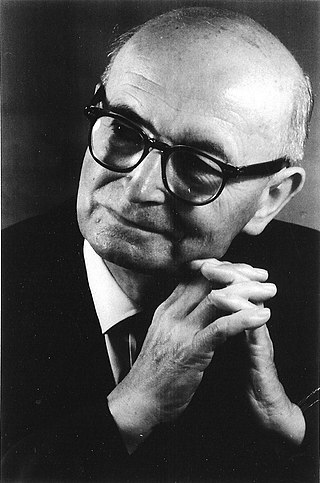
Shelomo Dov Goitein was a German-Jewish ethnographer, historian and Arabist known for his research on Jewish life in the Islamic Middle Ages, and particularly on the Cairo Geniza.

A History of the Arab Peoples is a book written from 1991 by the British-born Lebanese historian Albert Hourani.
ʾAḥmad ibn Yaḥyā ibn Jābir al-Balādhurī was a 9th-century Muslim historian. One of the eminent Middle Eastern historians of his age, he spent most of his life in Baghdad and enjoyed great influence at the court of the caliph al-Mutawakkil. He travelled in Syria and Iraq, compiling information for his major works.

The Muslim conquest of the Maghreb or Arab conquest of the Maghreb by the Rashidun and Umayyad Caliphates commenced in 647 and concluded in 709, when the Byzantine Empire lost its last remaining strongholds to Caliph Al-Walid I. The North African campaigns were part of the century of rapid early Muslim conquests.
Philip Khuri Hitti was a Lebanese-American professor and scholar at Princeton and Harvard University, and authority on Arab and Middle Eastern history, Islam, and Semitic languages. He almost single-handedly created the discipline of Arabic studies in the United States. His grandniece was the now deceased NASA astronaut and schoolteacher Christa McAuliffe.
Yusuf ibn Abd al-Rahman al-Fihri was the governor of al-Andalus from 747 to 756, initially ruling under the Umayyad Caliphate and then independently following the Abbasid takeover in 750. He was a descendant of Uqba ibn Nafi, the founder of Kairouan.
Futūh al-Buldān, or Kitāb Futūḥ al-Buldān, is the best known work by the 9th century Arab or Persian historian Ahmad Ibn Yahya al-Baladhuri of Abbasid-era Baghdad.

Shemlan, is a village in the Aley District of the Mount Lebanon Governorate in Lebanon, located about 25 km from Beirut.
Kharija ibn Hudhafa was a companion of Muhammad and a commander in the Muslim conquest of Egypt during the reign of Caliph Umar. He served as the chief judge and commander of the security forces in Egypt under the governor Amr ibn al-As.
Tulayha ibn Khuwaylid ibn Nawfal al-Asadi was a wealthy Arab clan chief and military commander during the time of Muhammad; he belonged to the Banu Asad ibn Khuzaymah tribe.
Al-Nawbakhti, is the Persian surname of several notable figures in Islamic, especially Shia Islamic, theology, philosophy and science. Several variations include Nawbakht, Nūbukht, Nibakht, Naybakht and Ibn Nawbakht. Many members of the Nawbakht family, or clan, distinguished themselves in the science of the stars and made decisive contributions to the development of the Twelver Shia faith at a time of confusion following the Minor Occultation of the 12th Imam.The clan's theological accomplishments include the formal integration of Mutazila rationalist doctrine into Twelver Shi'ism, explaining the Occultation and defending it against Shia doubters, developing the Imamate doctrine and to lay the groundwork for the authority of the Twelver scholars over their communities.
Wadi al-Taym, also transliterated as Wadi el-Taym, is a wadi that forms a large fertile valley in Lebanon, in the districts of Rachaya and Hasbaya on the western slopes of Mount Hermon. It adjoins the Beqaa Valley running north to south towards the Jordan Valley where it meets the northwest corner of Lake Huleh. Watered by the Hasbani river, the low hills of Wadi al-Taym are covered with rows of silver-green olive trees with the population in the area being predominantly Druze and Sunni, with a high number of Christians, mostly Greek Orthodox. Wadi al-Taym is generally considered the "birthplace of the Druze faith".
